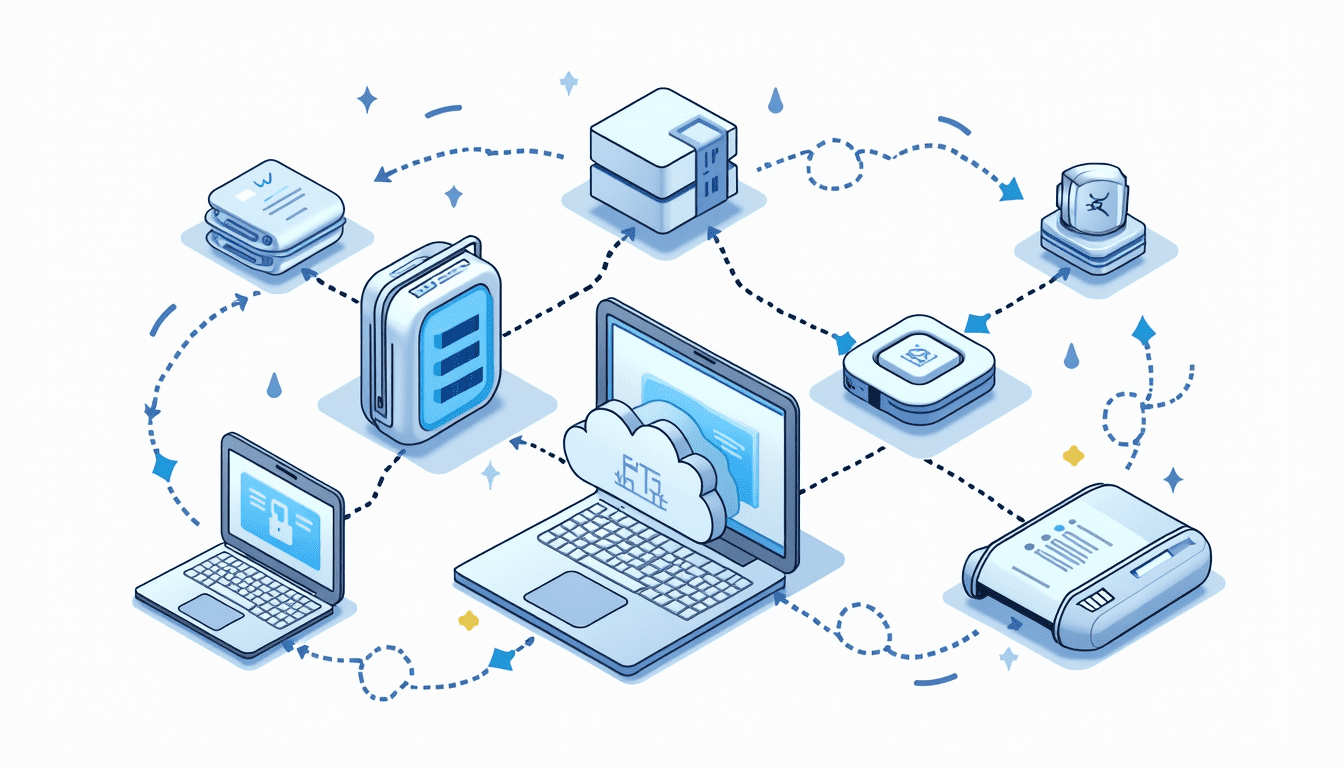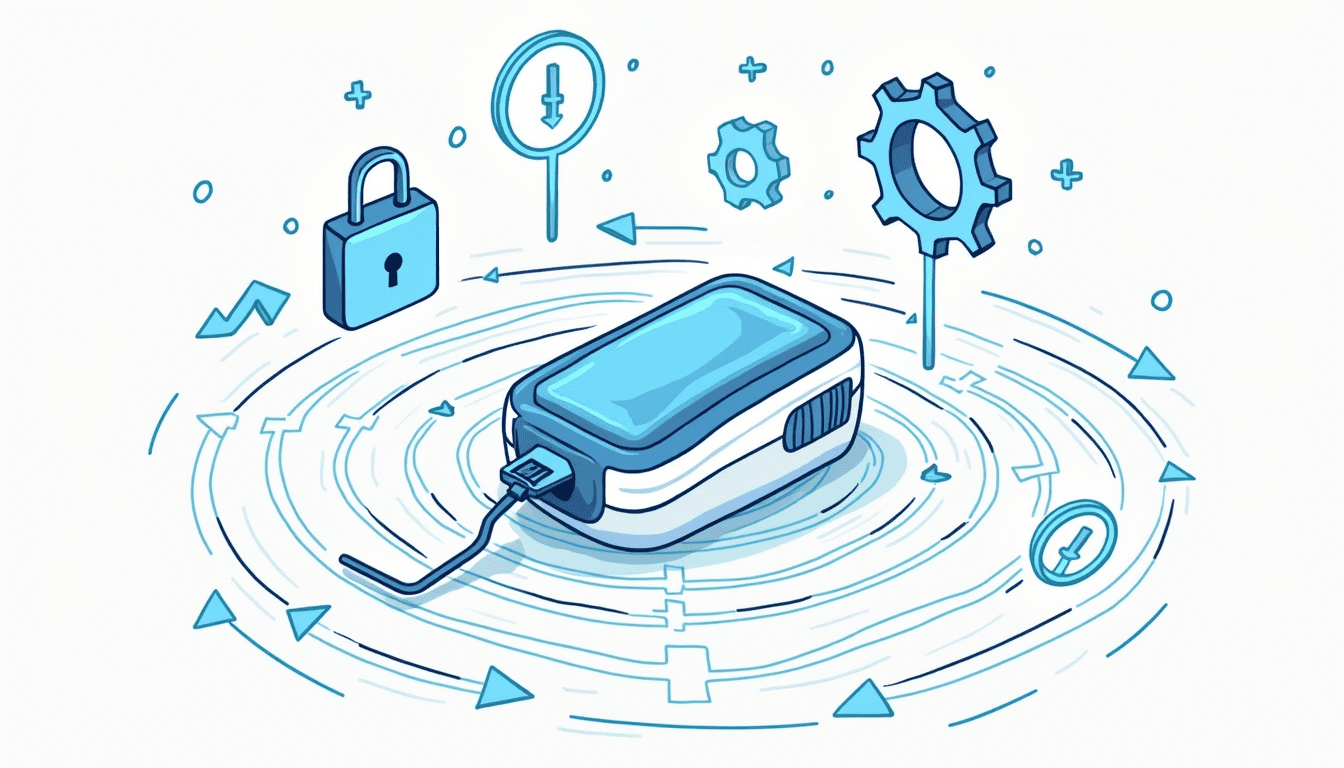Updated March 9, 2025
In medical devices, security is not just a luxury; it’s a necessity. As technology advances, these devices have become more interconnected, making them vulnerable to potential attacks. Secure updates are critical. They ensure that devices are shielded from security breaches while maintaining functionality. They are akin to the locks on your front door, fortifying your home against unwelcome intruders.
Consider this: a cybersecurity breach in a medical device could lead to dire consequences. The ramifications can be severe, from potential data leaks to threats against patient safety. Secure updates protect patient data and lives. In this ever-evolving digital landscape, staying ahead of potential threats must be a top priority for all stakeholders.
The Role of Secure Updates in Patient Safety
Imagine a situation where a malfunctioning medical device could mean the difference between life and death. Secure updates play a monumental role in ensuring that medical devices maintain reliability and safety. They patch vulnerabilities and rectify issues, ensuring patients receive the highest standard of care.
For instance, a pacemaker that receives a timely update can function impeccably, effectively adjusting to a patient’s needs. Neglecting updates, on the other hand, resembles ignoring a warning light on your car dashboard. It’s a risk that could lead to catastrophic outcomes!
Integrating artificial intelligence and machine learning into medical devices has introduced new layers of complexity. These technologies can enhance patient monitoring and treatment personalization but also require frequent updates to adapt to evolving algorithms and security protocols. The importance of secure updates becomes even more pronounced in this context, as outdated software could compromise device performance and lead to misdiagnosis or inappropriate treatment plans.
The Impact of Cybersecurity Threats on Medical Devices
Healthcare is a goldmine for cybercriminals. Often perceived as isolated systems, medical devices can be entry points for sophisticated attacks. A single unsecured device is like an open window—attractive and inviting to malware. These threats have escalated, affecting not just systems but real lives.
In a recent study, over 100 medical device manufacturers reported rising cyberattack concerns. Threats are no longer hypothetical; they are tangible and growing more sophisticated daily. Consequently, secure updates are a proactive approach to counter these threats, ensuring that security gaps are promptly addressed.
The implications of a cyberattack extend beyond immediate safety concerns. They can disrupt healthcare operations, leading to delays in treatment and increased costs for hospitals and patients alike. The ripple effect of such breaches can strain healthcare resources, diverting attention from patient care to crisis management. Implementing robust security measures, including regular and secure updates, is not merely a technical requirement but a fundamental aspect of healthcare delivery that prioritizes patient welfare and institutional integrity.
Elements of a Secure Update Strategy for Medical Devices
A robust update strategy is like a well-oiled machine. It requires careful consideration and planning to ensure smooth operation. This strategy encompasses various elements, from identifying vulnerabilities to implementing foolproof authentication measures.

Identifying Potential Vulnerabilities
Before you can solve a problem, you need to identify it. Organizations must conduct regular assessments to pinpoint vulnerabilities. Is it outdated software? Is it a weak password policy? These factors can create a loophole for cybercriminals.
Implementing regular vulnerability assessments can save lives. It is an initial step in bolstering defenses. Once vulnerabilities are identified, devices can be fortified against potential threats, creating a safer healthcare environment. Moreover, organizations should consider adopting a proactive approach by utilizing threat intelligence tools that provide real-time data on emerging vulnerabilities. This enables healthcare providers to stay ahead of potential threats and adapt their strategies accordingly, ensuring their devices remain secure against evolving cyber risks.
Implementing Robust Authentication Measures
Imagine if your bank account had no password; it would be like handing over the keys to a safe. Robust authentication measures are essential for medical devices, guarding against unauthorized access. Techniques such as multi-factor authentication add layers of defense, ensuring that only authorized personnel can instigate updates.
Simplistically, more layers equal more security. Hence, organizations must adapt and implement these advanced measures. This proactive stance protects the devices and the patients who rely on them. Additionally, training staff on the importance of these authentication measures is vital. Regular workshops can help employees understand the potential consequences of lax security practices, fostering a culture of vigilance and responsibility. As cyber threats continue to grow in sophistication, empowering staff with knowledge and tools to recognize and respond to security challenges becomes an integral part of the overall update strategy.
Best Practices for Secure Updates in Medical Devices
Following best practices can make all the difference in the world. They serve as a roadmap, guiding organizations toward better security protocols. These practices ensure that updates are not just frequent but effective.
Regular Monitoring and Maintenance
Think of regular monitoring as the heartbeat of medical device security. Consistent checks and balances are crucial; flaws are permitted to fester without them. Organizations must allocate resources to monitor devices continuously, ensuring they always function optimally.
Maintenance isn’t a one-time task; it’s an ongoing commitment to excellence. Continuous monitoring acts like a vigilant guardian, alerting you to potential dangers before they escalate. It’s about being proactive, not reactive. Furthermore, regular audits can help identify vulnerabilities that may not be apparent during routine checks. These audits should include assessments of both hardware and software components, ensuring that every aspect of the device’s operation is scrutinized for potential risks.
Incorporating Encryption in Updates
Encryption is the secret sauce of secure updates. It converts data into a coded format, making it incomprehensible to unauthorized users. Just like a suit of armor, encryption protects vital information during transmission.
In high-stakes environments like healthcare, data integrity is non-negotiable. By integrating encryption, organizations ensure that updates are both secure and trustworthy. It’s about forging a solid foundation of security around medical devices. Additionally, organizations should consider implementing end-to-end encryption, which ensures that data is encrypted at every stage of its journey—from the moment it leaves the device until it reaches its intended destination. This comprehensive approach enhances security and builds trust among users and stakeholders, reinforcing the commitment to safeguarding sensitive information in a landscape where cyber threats are ever-evolving.
Overcoming Challenges in Secure Update Implementation
No journey is without hurdles, and implementing secure updates is no exception. Organizations may face various challenges, from compatibility issues to regulatory compliance. However, overcoming these challenges is not only possible but necessary.

Addressing Compatibility Issues
Devices often come in different shapes and sizes—some may be modern, while others are outdated. Compatibility issues can arise during secure update implementations, preventing devices from receiving necessary patches. These discrepancies can leave devices exposed to threats.
Addressing this requires diligence. A cohesive approach involving cross-functional teams can ensure that all devices are consistently updated. It requires collaboration—after all, teamwork makes the dream work. The goal is to create a unified system that is resistant to potential breaches. Furthermore, organizations can invest in compatibility testing tools that simulate various environments, allowing them to identify potential issues before rolling out updates. This proactive strategy minimizes disruptions and enhances the organization’s overall security posture, ensuring that all devices, regardless of their age or specifications, are fortified against emerging threats.
Navigating Regulatory Compliance
Regulatory compliance can feel like navigating a maze. As organizations implement updates, they must adhere to strict regulations, which can complicate processes. Understanding these regulations is crucial; they are put in place to protect patients and devices.
By staying informed and proactive, organizations can avoid pitfalls. Fostering relationships with regulatory bodies and ensuring they are always in the loop is essential. After all, communication is vital to maintaining compliance. Additionally, organizations should consider establishing a dedicated compliance team that monitors regulation changes and interprets their implications for secure updates. This team can conduct regular training sessions for staff, ensuring everyone is aware of compliance requirements and the importance of adhering to them. By embedding a culture of compliance within the organization, companies can streamline their update processes and build trust with stakeholders, reinforcing their commitment to security and regulatory adherence.
Future Trends in Secure Updates for Medical Devices
The future is bright for secure updates, with technological advancements paving the way for innovative practices. Staying ahead means anticipating these trends and integrating them into strategies.
The Role of Artificial Intelligence in Secure Updates
Artificial Intelligence (AI) is revolutionizing secure updates. With its analytical capabilities, AI can detect anomalies in real-time, making it a formidable ally against cyber threats. It learns from historical data, constantly improving defenses.
Organizations that utilize AI for secure updates can benefit from enhanced efficiency and accuracy. It’s like having a tireless watchman, perpetually vigilant and exceptionally adaptive.
The Impact of Blockchain Technology on Medical Device Security
Blockchain technology holds immense potential to transform the security landscape of medical devices. Its decentralized nature provides a robust framework for ensuring the integrity of updates. This technology can create secure, verifiable histories for each device, making tampering nearly impossible.
As blockchain continues to develop, it will offer unprecedented transparency and traceability. This can significantly enhance trust between manufacturers, healthcare providers, and patients. The future of secure updates is bright and full of promise!
Conclusion
As the medical device landscape evolves, so does the complexity of cybersecurity threats. At Blue Goat Cyber, we understand the critical nature of secure updates and their role in patient safety and regulatory compliance. Our expert team has top-tier certifications and tailored healthcare security methodologies aligning with the requirements of the FDA, IEC 62304, and EU MDR. We’ve successfully guided over 100 devices through FDA submissions and offer comprehensive postmarket support. Don’t let cybersecurity challenges hinder your medical device’s performance and compliance.
Contact us today for cybersecurity help. Partner with a leader in medical device cybersecurity to ensure your devices are secure, compliant, and resilient throughout their lifecycle.
Check out our premarket cybersecurity submission services.
Securely Updating Medical Devices FAQs
Medical devices require secure updates to patch vulnerabilities, enhance cybersecurity, improve performance, and comply with regulatory standards. Unpatched devices can be exploited by hackers, leading to data breaches, ransomware attacks, or even patient safety risks.
- Malware injection – Attackers can exploit unencrypted or unauthenticated updates to install malicious software.
- Unauthorized access – Weak authentication can allow hackers to alter firmware or software.
- System downtime – Improper updates may cause device failures, leading to disruptions in patient care.
- Regulatory non-compliance – Failure to apply security updates can result in violations of FDA, HIPAA, and EU MDR requirements.
- Digitally sign updates to verify authenticity before installation.
- Encrypt update files to prevent tampering or interception.
- Use secure boot mechanisms to block unauthorized code execution.
- Employ multi-factor authentication (MFA) for update authorization.
- Implement rollback mechanisms in case an update causes system issues.
The FDA’s Cybersecurity Guidance and international standards such as IEC 62304 and ISO 14971 require medical device manufacturers to:
- Design devices with secure update mechanisms.
- Monitor and assess post-market cybersecurity risks.
- Provide timely patches for identified vulnerabilities.
- Maintain an inventory of connected medical devices and their update status.
- Use network segmentation to isolate devices from cyber threats.
- Work with manufacturers to schedule updates during low-risk periods.
- Enable automatic updates where possible while maintaining strict security controls.
Yes, poorly implemented updates can introduce software bugs, compatibility issues, or system failures. To prevent this:
- Test updates in controlled environments before full deployment.
- Verify manufacturer-provided security patches.
- Ensure backup and rollback procedures are in place.
Regular updates help defend against ransomware, zero-day vulnerabilities, and remote exploitation. A secure update lifecycle ensures that:
- Devices are protected from known security flaws.
- Encryption and authentication prevent tampering.
- Updates comply with FDA cybersecurity guidelines and HIPAA standards.
